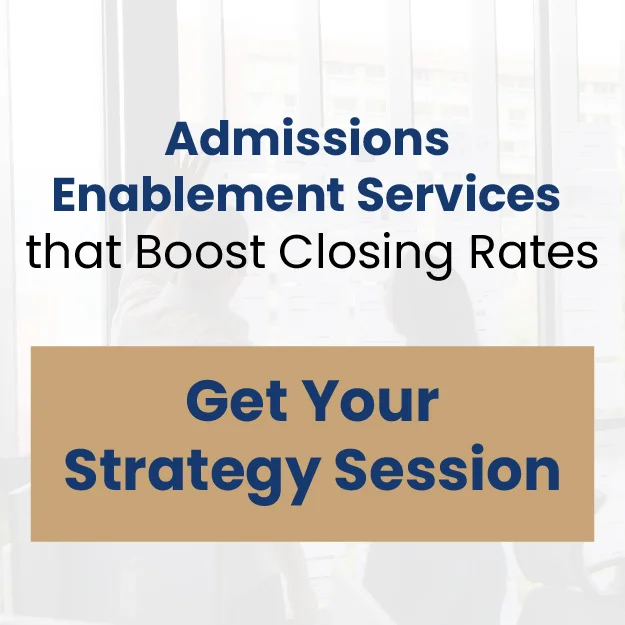Creating and rolling out a sales collateral strategy can be a daunting task. But consider these motivating facts:
- According to Aberdeen Market Research, companies with a sales enablement strategy in place are 32 percent more likely to make their sales quota vs. companies without one.
- According to market research firm FocusVision, the average B2B buyer’s journey involves consumption of 13 pieces of content.
- According to Forrester, 90 percent of B2B sellers don’t use their sales material because it’s either irrelevant, outdated, and difficult to locate and customize.
- According to Miller Heiman Group, companies that have implemented a sales enablement content strategy have increased their win rate by 27.1 percent.
- According to a study by CSO insights, only 51% of sales professionals felt that their sales enablement collateral met or exceeded their expectations. And 54% said they didn’t have enough content to help them move their prospects through the sales cycle effectively.
In this post I’ll cover in depth the sales enablement tools and software that you can leverage to ramp up your sales.
Types of Sales Enablement Collateral
What exactly is sales enablement collateral? It’s collateral that helps the seller build trust with prospects and demonstrates the value of their solutions.
Note that this collateral is a blend of both
- Internal collateral designed to empower your reps when navigating complex sales conversations with prospects and
- Collateral that can be shared with prospects during the sales cycle to enhance the deal process in your favor.
Below are twenty collateral examples I recommend adding to your “Smarketing Program Roadmap”. They aren’t necessarily in priority order, but you can develop them as you see fit once you and your team collectively gauge what makes the most impact for your sales.
1. White Papers
An authoritative report or guide (usually 10-15 pages long) with an educational tone that informs your prospective clients about how to solve a potential problem or understand an opportunity to improve something within their organization. According to research by Demand Gen, White Papers are the second most popular content format after Video.
2. eBooks
A popular content format highly effective for B2B demand gen efforts. According to research by Content Marketing Institute, 51% of B2B businesses incorporate eBooks into their content marketing strategy. They can be effective to fuel credibility and authority within your domain.
3. Blog Posts
A highly popular content format. It’s important to keep quality over quantity in mind. They are key from an SEO perspective. Equally important is their use by sales reps to address questions prospects may have during the sales cycle. Their flexibility and focus easily allow reps to share them in their outreach sequences as they see fit.
4. FAQs
A must-have element in your sales enablement collateral. Not only can they be useful to display on your website or landing page to set correct expectations, they can demonstrate your expertise and instil trust with prospects at any stage in the sales cycle. Additionally, they will increase the efficacy of your sales cycle by cutting down on unproductive questions from your prospects.
5. Research Reports and Data Sheets
Research and data on a subject in your marketplace can be very helpful as it aids data-driven observations. These can help facilitate better decision-making for your prospects as well as validating your hypotheses.
6. Competitor Scorecards
A brief overview of how you stack up against your competition with key insights and pros and cons of features, pricing, terms and conditions (obviously with the objective of positioning your solution advantageously).
7. Product Explainers
Especially in video format (the #1 content format per Demand Gen), these are effective in giving your prospects a sneak-peek of your solution and thereby pique their interest in getting a full solution demo.
8. Demo Recordings
An overview of your solution can be used during several stages of your sales process. This is especially true for B2B sales where often there are multiple decision makers, several vendor comparisons and multiple procurement processes in place. Providing a demo recording helps you move deals forward faster and more effectively.
9. Features and Benefits One-Pagers
When your prospect is particularly interested in one or more features, these can be useful to move them from interest to the demo stage in your sales process. As well, you can circulate these after the demo process, to reinforce the value of your solution for a particular benefit that sparked their excitement.
10. Sales Pitch Decks
It goes without saying these are a must-have element of your sales process. But they need to be refined to perfection, especially if meant to be shared with prospects after the demo process who then circulate internally within your prospect’s company. You should create pitch decks for each customer segment and scenario.
11. Objection Handling Guidelines
A cornerstone internal document of any successful sales organization. Even the best fit prospect most likely has a series of objections that, if not answered effectively, can cause them to walk away from the table and select another vendor.
12. Sales Playbooks
Your one-stop resource for all the critical information that enables your sales reps to follow your best practices and maximize performance.
13. Internal Success Videos
Especially relevant when scaling your team. A lot of golden nuggets and useful practices get siloed up or lost in translation as you grow. Creating videos by your reps for other reps (and prospects) is very useful to demonstrate what worked well and why.
14. ROI Calculators
One of my absolute personal favorite pieces of collateral proven to shorten sales cycles and boost win rates. They can empower your sales teams with interactive ROI calculations conducted either by your reps on calls or by prospects during the sales cycle.
15. Pricing Calculators
A must-have if your pricing structure is complex or difficult to understand. They can also be useful as lead capture elements when prospects visit your site while conducting research and inquiring about more information.
16. Brochures and Booklets
Useful because of their format and length and can be circulated as needed with prospects as a quick introductory overview of your company and solutions.
17. Call Scripts or Pitch Guidelines
Extremely helpful when onboarding new reps and scaling. Your pitch undoubtedly varies depending on your buyer persona, if the lead was sourced outbound vs. inbound, or whether the conversation was triggered by an asset download or a marketing campaign. Crafting messaging that’s customized for each scenario may be easy for the more experienced rep but not for newer reps within your company.
18. Newsletters
Helpful for prospects at any stage of your sales cycle by establishing trust and staying top of mind. The initiative also helps your brand reputation and forms a relationship with your prospects, regardless of how much interaction they have had to date with your sales team.
19. Webinars
A very common sales enablement strategy. They can serve as a scalable initiative for you to engage with leads and prospects at any stage. Very popular is to bring in subject matter experts from your partner networks and thereby tapping into their audience.
20. Podcasts
Are becoming more popular than ever from a B2B sales perspective because you can establish partnerships, leads, connections, and long-term relationships by inviting relevant guests on your show.
Podcasts also create deeper engagement compared to other avenues and are a great way to position your brand as a legitimate player in your space.
The Value in Creating Your Collateral Toolbox
Common for all the above-mentioned types of sales enablement collateral is that they’re proven to help your customer-facing employees, whether SDRs, AEs or CSMs, to more effectively prepare and interact with prospects and customers.
Think of it as a handyperson going to work and having a few tools in their toolbox versus a set of twenty that cover almost every scenario. And with a few clicks they can be added to the conversation to make the difference between an opportunity won or lost.
From a personal standpoint, I can’t imagine running a sales organization without a heavy arsenal of such tools at my reps’ disposal. The value of creating such content is exponential as it can be used across your organization.
1. Learning Content for new Reps
Foremost, your collateral toolbox aids as great learning content when onboarding new reps. Implementing this step in your sales enablement collateral process further helps you to continuously audit and update your content so that it’s always relevant—something many companies neglect once created.
2. Marketing Benefits
Marketing can leverage much of the work in the demand generation process and marketing campaigns. As well it gives your reps strong ammunition to advance more and better conversations with prospects and ultimately close more deals.
3. Improved Collaboration
Your collateral can promote better collaboration between your teams, especially between sales and marketing, but also finance and operations. They will be better able to understand what works well and possibly allocate more resources toward areas of growth potential.
If you’d like to discuss your particular requirements in more detail and how to accelerate your sales strategy, reach out to me at gary@elev8.io








